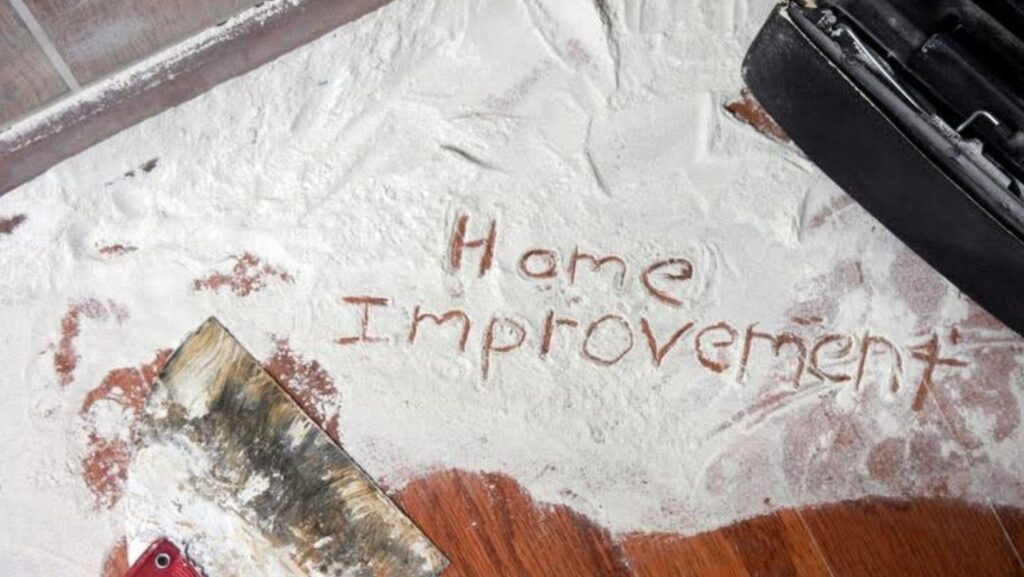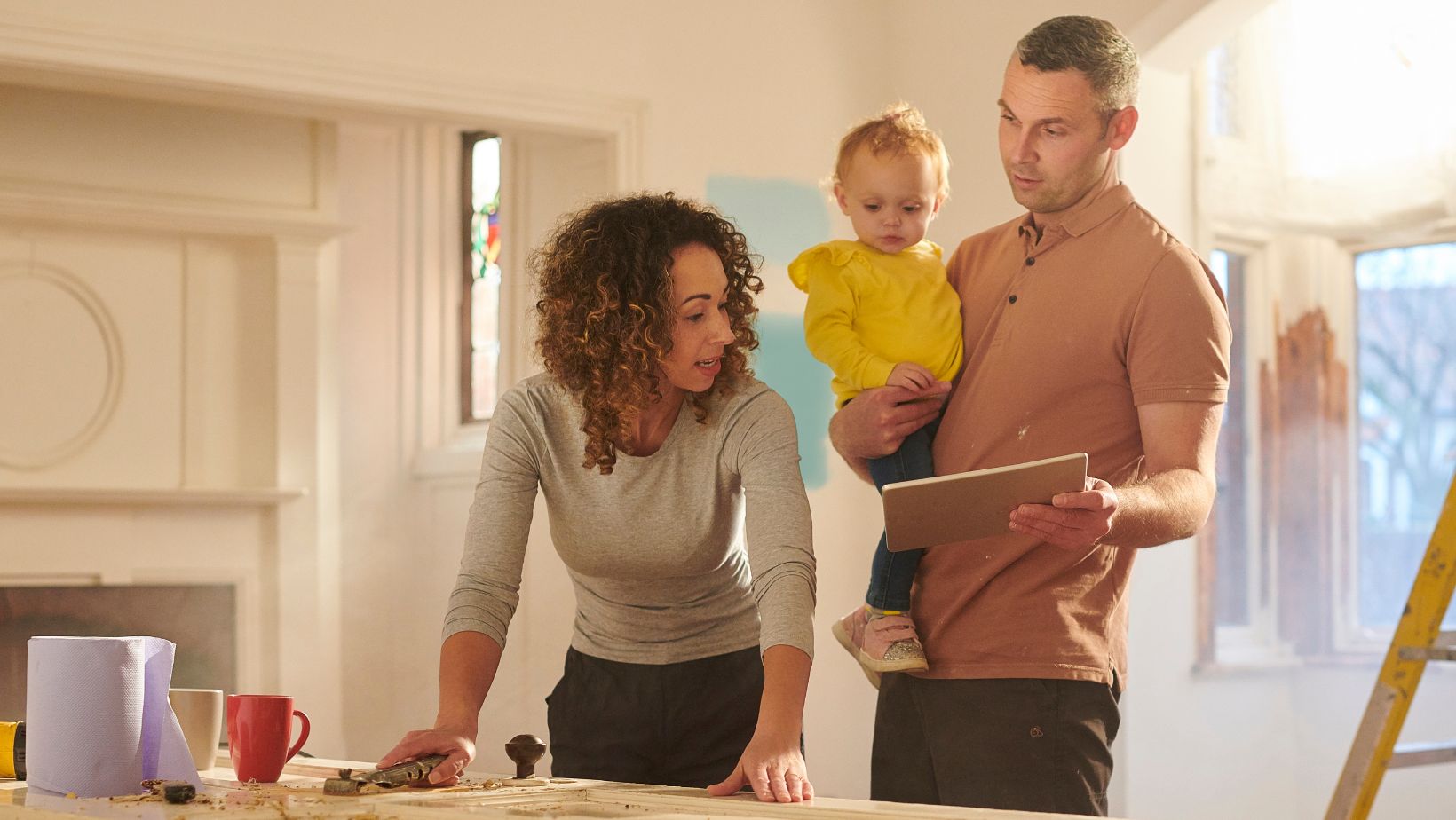Image via Dreamstime.com
Home improvement projects can be exciting. Whether you’re sprucing up your kitchen, adding a deck, or giving your walls a fresh coat of paint, there’s a unique satisfaction in making your home more beautiful and functional. But as rewarding as these projects can be, they also come with potential pitfalls. Even the most well-intentioned upgrades can go sideways if you’re not prepared, leading to wasted money, lost time, and plenty of frustration.
By knowing the most common home improvement mistakes and how to avoid them, you can ensure your efforts pay off. Here are seven errors to steer clear of when tackling your next project.
1. Skipping the Planning Stage
One of the biggest mistakes homeowners make is diving into a project without a clear plan. Enthusiasm is great, but starting without detailed preparation can quickly lead to problems. Without a plan, you risk running out of materials, making design choices you regret, or discovering halfway through that your project costs far more than you anticipated.
Before you pick up a hammer or paintbrush, take the time to outline exactly what you want to achieve. Create a detailed budget, gather necessary materials, and establish a realistic timeline. Planning also means considering the order of tasks—painting the walls before replacing the floor, for example, could leave you with damage to your fresh paint job.
2. Underestimating the Budget
It’s easy to look at the price of materials and assume that’s your total cost. But labor, permits, tools, and unexpected expenses can add up fast. Many homeowners find themselves overspending because they didn’t factor in all the hidden costs from the start.
The best approach is to budget more than you think you’ll need. A common rule of thumb is to set aside at least 10–20% of your budget for unexpected issues. Maybe you’ll find water damage behind the drywall or realize your “simple” plumbing upgrade requires extra work. That cushion can save you from financial stress mid-project.
3. Overestimating DIY Skills
DIY can be a fantastic way to save money, but it’s important to be honest about your skills and limitations. Painting a room or assembling furniture might be easy enough, but installing electrical wiring or tackling complex plumbing without the proper expertise can be dangerous—and costly if mistakes need to be fixed by a professional later.
Know when to hire help. If a task requires specialized tools, advanced knowledge, or could pose a safety risk, it’s worth bringing in an expert. The added cost often outweighs the potential expense of fixing errors.
4. Ignoring Permits and Codes
Some home improvement projects require permits or must meet specific building codes, especially those involving structural changes, plumbing, or electrical work. Skipping this step might seem like a way to save time and money, but it can lead to major problems down the road.
Unpermitted work can result in fines, force you to redo the project, and even create issues if you try to sell your home. Always check with your local building department before starting work to ensure you’re meeting all necessary requirements.
5. Choosing Style Over Function
It’s tempting to focus on aesthetics when improving your home, but ignoring function can lead to regret. For example, you might fall in love with a sleek faucet that’s difficult to clean or choose beautiful open shelving that doesn’t provide enough storage.
The most successful home improvements balance form and function. Choose materials and designs that look good and work well for your lifestyle. This approach ensures your upgrades are not just attractive, but also practical for daily use.
6. Using Low-Quality Materials
Cutting corners on materials might seem like a budget-friendly decision, but it can cost you more in the long run. Cheap flooring may wear out quickly, low-quality paint might require extra coats, and bargain fixtures could fail sooner than expected.
Invest in the best quality you can afford for core elements like flooring, countertops, and fixtures. This doesn’t mean you have to choose the most expensive option—it means finding durable, reliable materials that will stand the test of time. For finishing touches, you can stretch your budget with affordable décor, such as high-quality framed prints or even thoughtfully selected stock photos to enhance your space without overspending.
7. Forgetting the Finishing Touches
Many homeowners focus on the big-ticket items—new cabinets, fresh flooring, updated lighting—but forget the smaller details that complete a space. Without these finishing touches, even a well-executed project can feel incomplete.
These details might include baseboards, caulking around new fixtures, hardware on cabinets, or décor that ties the room together. For example, after renovating a living room, adding accent pillows, curtains, and artwork can make it feel warm and inviting. In the kitchen, new drawer pulls or a stylish backsplash can provide that polished, finished look.
How to Avoid These Mistakes
The best way to avoid common home improvement mistakes is to approach your project with patience and preparation.
Research thoroughly before committing to a design or product, and don’t rush into decisions just to get things done faster.
Here are some quick tips to keep in mind:
- Always measure twice before cutting or ordering materials.
- Gather multiple quotes for services and compare them carefully.
- Read reviews of products before buying to ensure they meet your needs.
- Schedule your work at a realistic pace so you can address issues as they arise without feeling pressured.
The Value of a Thoughtful Approach
Home improvement is an investment—both financially and in the comfort of your living space. Avoiding common mistakes not only saves you money and time but also ensures the end result is something you’ll enjoy for years.
Every project, big or small, benefits from a clear vision, quality materials, and attention to detail. When you put the effort into doing things right from the start, you end up with results that are both beautiful and lasting.
Final Thoughts
Tackling home improvement projects can be incredibly rewarding, but they’re not without challenges. By avoiding these seven common mistakes—skipping planning, underestimating the budget, overestimating your skills, ignoring permits, prioritizing style over function, using low-quality materials, and neglecting finishing touches—you can set yourself up for success.
Remember that small choices matter as much as big ones. Taking time to plan carefully, invest wisely, and finish thoroughly will ensure your home improvements not only look good today but continue to serve you well in the future.
With the right approach, every project can be a step toward creating the home you’ve always wanted—without the costly missteps that so many homeowners experience.



More Stories
How to Know When It’s Time to Replace Your HVAC System?
How to Find Reliable Heater Repair Services Near You
A Guide to Selecting the Right Jewelry This Holiday Season: